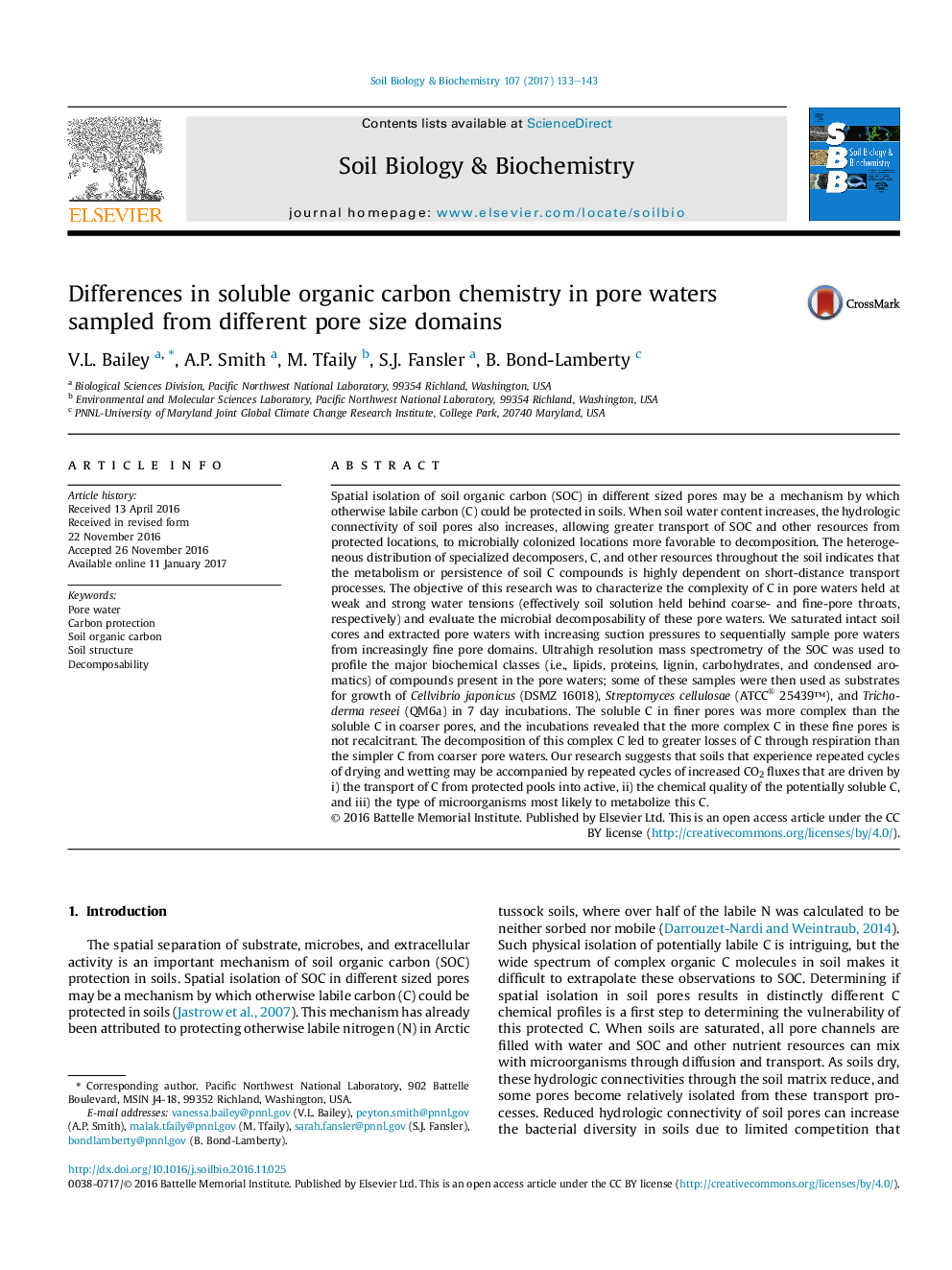| Article ID | Journal | Published Year | Pages | File Type |
|---|---|---|---|---|
| 5516423 | Soil Biology and Biochemistry | 2017 | 11 Pages |
â¢Chemical forms of SOC differed in pore waters sampled with different suctions.â¢The SOC in finer pores was more complex than the SOC in coarser pores.â¢Incubations with model microbes revealed complex SOC in fine pores is decomposable.â¢Incubation of fine-pore SOC led to greater respiration than SOC from coarse pores.
Spatial isolation of soil organic carbon (SOC) in different sized pores may be a mechanism by which otherwise labile carbon (C) could be protected in soils. When soil water content increases, the hydrologic connectivity of soil pores also increases, allowing greater transport of SOC and other resources from protected locations, to microbially colonized locations more favorable to decomposition. The heterogeneous distribution of specialized decomposers, C, and other resources throughout the soil indicates that the metabolism or persistence of soil C compounds is highly dependent on short-distance transport processes. The objective of this research was to characterize the complexity of C in pore waters held at weak and strong water tensions (effectively soil solution held behind coarse- and fine-pore throats, respectively) and evaluate the microbial decomposability of these pore waters. We saturated intact soil cores and extracted pore waters with increasing suction pressures to sequentially sample pore waters from increasingly fine pore domains. Ultrahigh resolution mass spectrometry of the SOC was used to profile the major biochemical classes (i.e., lipids, proteins, lignin, carbohydrates, and condensed aromatics) of compounds present in the pore waters; some of these samples were then used as substrates for growth of Cellvibrio japonicus (DSMZ 16018), Streptomyces cellulosae (ATCC® 25439â¢), and Trichoderma reseei (QM6a) in 7 day incubations. The soluble C in finer pores was more complex than the soluble C in coarser pores, and the incubations revealed that the more complex C in these fine pores is not recalcitrant. The decomposition of this complex C led to greater losses of C through respiration than the simpler C from coarser pore waters. Our research suggests that soils that experience repeated cycles of drying and wetting may be accompanied by repeated cycles of increased CO2 fluxes that are driven by i) the transport of C from protected pools into active, ii) the chemical quality of the potentially soluble C, and iii) the type of microorganisms most likely to metabolize this C.
